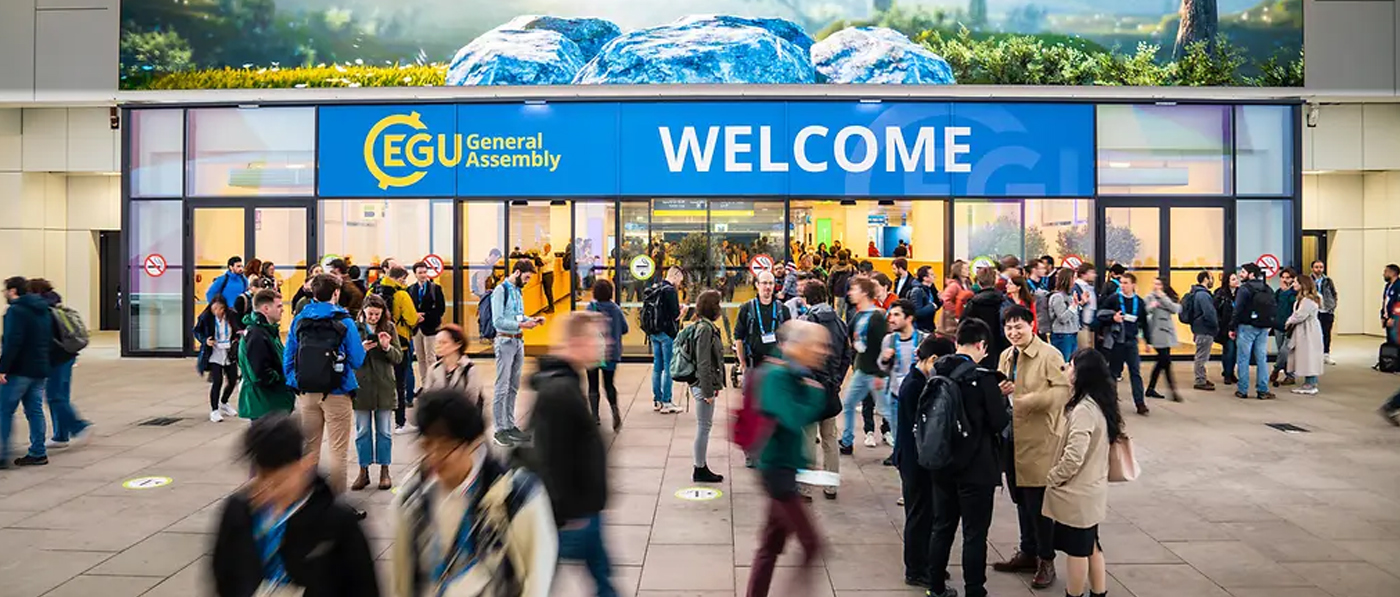Dr. Philipp Swoboda at EGU on the Agronomic Benefits of ERW
Recently, Dr. Philipp Swoboda, Impact and Science Lead at InPlanet, participated in the European Geosciences Union (EGU) General Assembly 2025 held in Vienna, Austria. On April 28th, he delivered a presentation on Agronomic co-benefits of enhanced rock weathering (ERW) with basalt applied to sugarcane grown on acidic soil in Brazil.
The EGU General Assembly is an annual event that brings together geoscientists from all over the world to one meeting, covering all geoscience disciplines. This year, the event welcomed 20,984 attendees, of whom 18,646 made their way to Vienna from 120 countries and 2,338 joined online from 104 countries. It was a great success with 18,934 presentations given in 1,102 sessions.
In his presentation, Dr. Swoboda outlined a pioneering experiment conducted directly within a commercial sugarcane field, investigating the effects of basalt rock powder on soil health, nutrient uptake, and crop yield. Initiated in August 2023, this comprehensive study provided valuable insights into regenerative agricultural practices and their potential to enhance productivity while addressing climate change through Enhanced Rock Weathering (ERW). The results highlighted the significance of such approaches for advancing regenerative agriculture and CDR at a global scale.

Pioneering commercial field deployment and ERW research in the tropics
Various potential agronomic co-benefits are suggested for silicate rock powders in the tropics, but there are few studies conducted under commercial field deployment conditions. In the study presented, InPlanet’s team measured and reported the effects of basalt rock powder applied to sugarcane grown on an oxisol (highly weathered soil typically found in tropical and subtropical regions) in Sao Paulo, Brazil.
The experiment was directly embedded within the commercial fields of the farm and set up in August 2023 as a randomized block design with four treatments (0, 10, 50, 100t/ha; surface applied) and four replicates. Agronomic management was kept identical to the operations of the farm. Soil samples were analyzed for various soil health parameters, including cation exchange capacity, pH, organic matter, and macro- and micro-nutrients. Different biometric parameters and nutrient uptake were measured in the sugarcane. Additionally, CO2 emissions were monitored and soil water was analyzed for pH, EC, DIC, and nutrients. Detailed multi-parameter results from one year of post-application monitoring of the experiment were presented, drawing comparison to positive yield results across the commercial scale deployment.

Insights from the wider ERW industry
As this unique event brought together leaders in geosciences from all over the world, several key trends and insights emerged that have wider implications and impact in terms of the agronomic case for ERW:
- Scientific leadership and data quality: InPlanet is a leading ERW company offering scientifically robust and statistically verified experimental data.
- Socio-Economic benefits: Other leading ERW companies in tropical regions, such as Mati and Flux, highlighted the agronomic and socio-economic benefits of ERW, particularly for small-scale farmers. This is a key factor for InPlanet as well.
- Innovation in Measurement, Reporting, and Verification (MRV): MRV remains a significant challenge for suppliers. Different approaches to MRV, such as those by ZeroEx and Everest, are being developed to overcome these challenges, in order to enable more widespread adoption of CDR in regenerative agriculture. Everest presented innovative liquid-based MRV approaches that could become game-changers for ERW-MRV.
- Emerging trends and opportunities in ERW: The future focus of ERW may include a shift towards total carbon budgets, incorporating reductions in nitrous oxide emissions and fertilizer use. This approach could position ERW as an even more outstanding CO2-negative strategy compared to other agronomic practices.
Overall, these reflections suggest that while challenges remain, especially around MRV, the potential agronomic benefits and alignment with broader socio-economic goals offer a promising outlook for the future of ERW in regenerative agriculture.
Building a transparent framework for ERW deployment
Producing and transparently communicating scientifically robust, clear, and tangible results for major crops, such as sugarcane, soy, and corn is critical for building a trusted and transparent framework around ERW deployments.
In order to accomplish this, InPlanet has prioritised the enhancement of extensive data collection and validation across a range of spatial scales and multiple phases.
These techniques have provided much-needed insight into the quantifiable benefits of ERW for farmers and for carbon removal.
Photo credit of main blog image: © EGU / Pfluegl